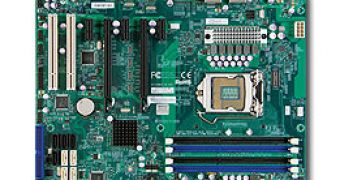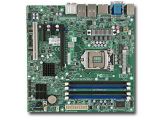Supermicro isn't a name that one would usually associate with mainstream computers, but that hasn't stopped the San Jose, California company to announce, during CES 2011, its own Sandy Bridge motherboard design that is based on the Intel P67 chipset.
Dubbed the C7P67, this is a full ATX part and is compatible with all of Intel's second generation Core processors.
As we have come to expect from Supermicro solutions, the C7P67 spots a pretty simple design, although this does indeed look like a solid board with no major layout problems.
Moving to its hardware configuration, the C7P67 comes with eight SATA ports, four of them of the SATA 6Gbps variety, as well as with dual PCI Express x16 slots (that drop to x8 when both are populated), three PCIe x1 slots and two regular PCI slots.
The maximum DDR3 amount supported is 32GB thanks to the four available DIMM slots.
Other workstation specific features include DOM (disk on module) support, a TPM 1.2 header as well as two Fast UART 16550 serial ports.
Moving at the back of the motherboard, we find that Supermicro decided to add to the C7P67 two USB 3.0 ports, dual Gigabit LAN ports, controlled by a Realtek RTL8111E chip, as well as a wide assortment of USB 2.0 ports and audio inputs.
In addition to the C7P67, Supermicro has also introduced a micro-ATX motherboard based on the Intel Q67 Express chipset.
Dubbed the C7Q67, the board sports a similar configuration to that of its older brother while also adding two HDMI and one VGA video output to the mix.
However, due to size constraints, Supermicro had to drop some of the expansion slots available on the C7P67, so the C7Q67 has to make do with only one PCIe x16 slot.
Pricing hasn't been detailed for any of the two models.

 14 DAY TRIAL //
14 DAY TRIAL // 
